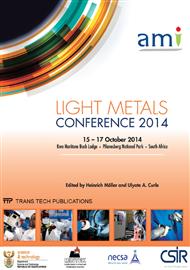p.287
p.294
p.302
p.311
p.318
p.327
p.333
p.339
p.347
Chatter Investigation in Titanium Milling
Abstract:
Titanium and its alloys have been experiencing extensive development over the past few decades. They have found wide applications in the aerospace, biomedical and automotive industries owing to their good strength-to-weight ratio and high corrosion resistance. Machining performance is often limited by chatter vibrations at the tool-workpiece interface. Chatter is an abnormal tool behaviour which is one of the most critical problems in the machining process and must be avoided to improve the dimensional accuracy and surface quality of the finished product. This research aims at investigating chatter trends in the end milling process and to identify machine parameters that have effects on chatter during machining. The machine parameters investigated include axial feed rate, spindle revolute speed and depth of cut. In this research, experimental data was collected using sensors to analyze the existence of chatter vibrations on each processing condition. This research showed that the combination of the machine parameters, feed rate and spindle speed within certain proportions has an influence on machine vibrations during end milling and if not managed properly, may lead to chatter.
Info:
Periodical:
Pages:
318-324
Citation:
Online since:
October 2014
Keywords:
Price:
Сopyright:
© 2014 Trans Tech Publications Ltd. All Rights Reserved
Share:
Citation:


